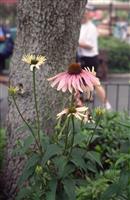
Discover How to Grow Medicinal Herbs
Medicinal herbs have been used by man for thousands of years. Even today, many societies around the world still make great use of medicinal herbs from knowledge which has been passed down from generation to generation. All plants regarded as medicinal herbs contain phytochemicals which have an effect of the body.
Build your herb knowledge
In this course you will learn what constitutes a medicinal herb, how to identify them, and how different plants and plant parts are used. You also learn about which soils are suited to growing herbs, water and fertiliser requirements, how to propagate them from seeds or cuttings, and control of pests and diseases. Cultural requirements for many of the most widely grown herbs are provided along with their uses and methods for preparing herbal remedies.